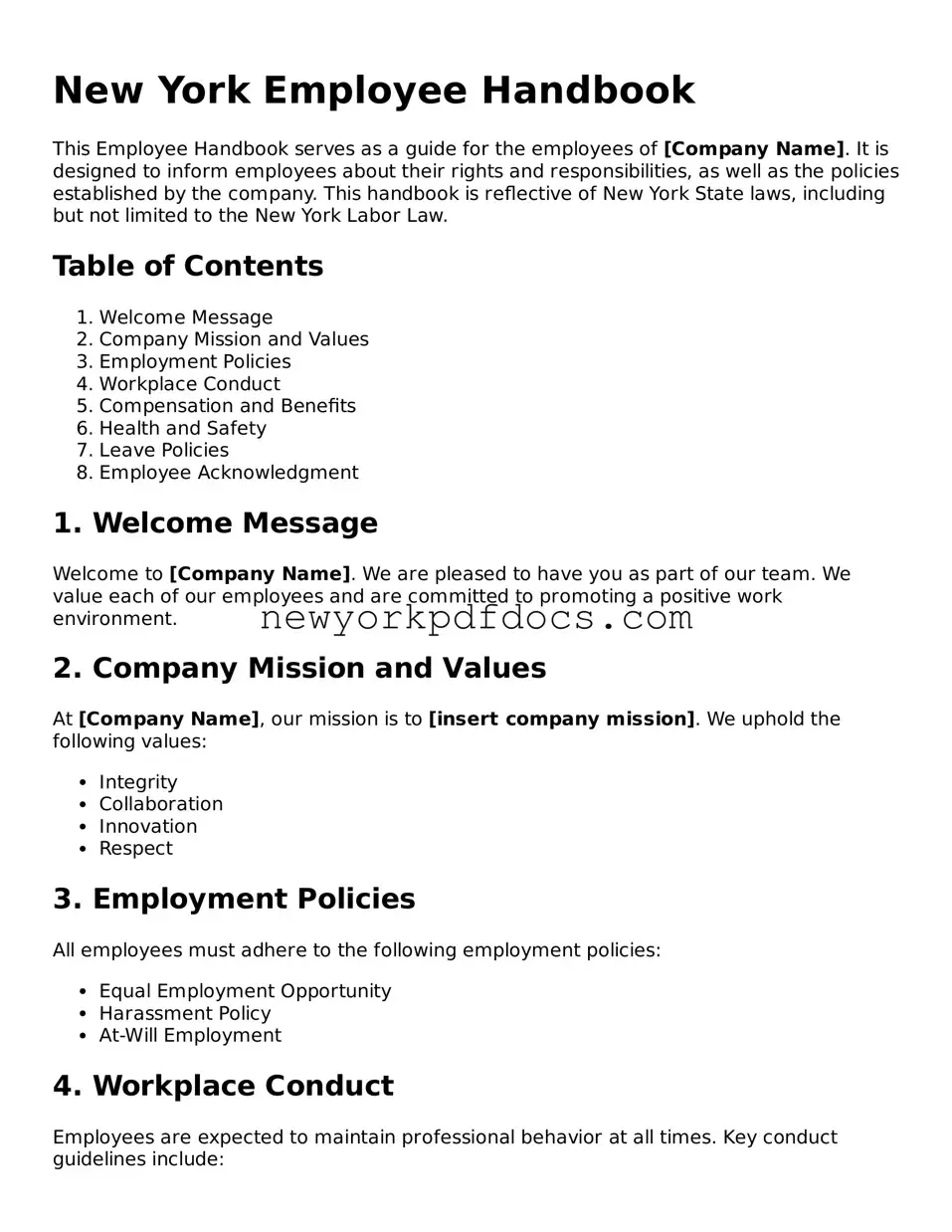New York Employee Handbook
This Employee Handbook serves as a guide for the employees of [Company Name]. It is designed to inform employees about their rights and responsibilities, as well as the policies established by the company. This handbook is reflective of New York State laws, including but not limited to the New York Labor Law.
Table of Contents
- Welcome Message
- Company Mission and Values
- Employment Policies
- Workplace Conduct
- Compensation and Benefits
- Health and Safety
- Leave Policies
- Employee Acknowledgment
1. Welcome Message
Welcome to [Company Name]. We are pleased to have you as part of our team. We value each of our employees and are committed to promoting a positive work environment.
2. Company Mission and Values
At [Company Name], our mission is to [insert company mission]. We uphold the following values:
- Integrity
- Collaboration
- Innovation
- Respect
3. Employment Policies
All employees must adhere to the following employment policies:
- Equal Employment Opportunity
- Harassment Policy
- At-Will Employment
4. Workplace Conduct
Employees are expected to maintain professional behavior at all times. Key conduct guidelines include:
- Respectful communication
- Punctuality
- Dress code adherence
5. Compensation and Benefits
Employees will receive compensation based on the following parameters:
- Salary reviews
- Bonus structures
- Health benefits
6. Health and Safety
Safety is a priority. Employees must report any unsafe conditions immediately. Training will be provided on:
- Emergency procedures
- Workplace ergonomics
- Reporting accidents
7. Leave Policies
The company provides various leave types, including:
- Sick Leave
- Vacation Leave
- FMLA Leave
8. Employee Acknowledgment
Upon completing the review of this handbook, employees must sign an acknowledgment form. This acknowledges understanding and compliance with the stated policies.
For questions regarding this handbook, please contact [HR Contact Name] at [HR Contact Email].
